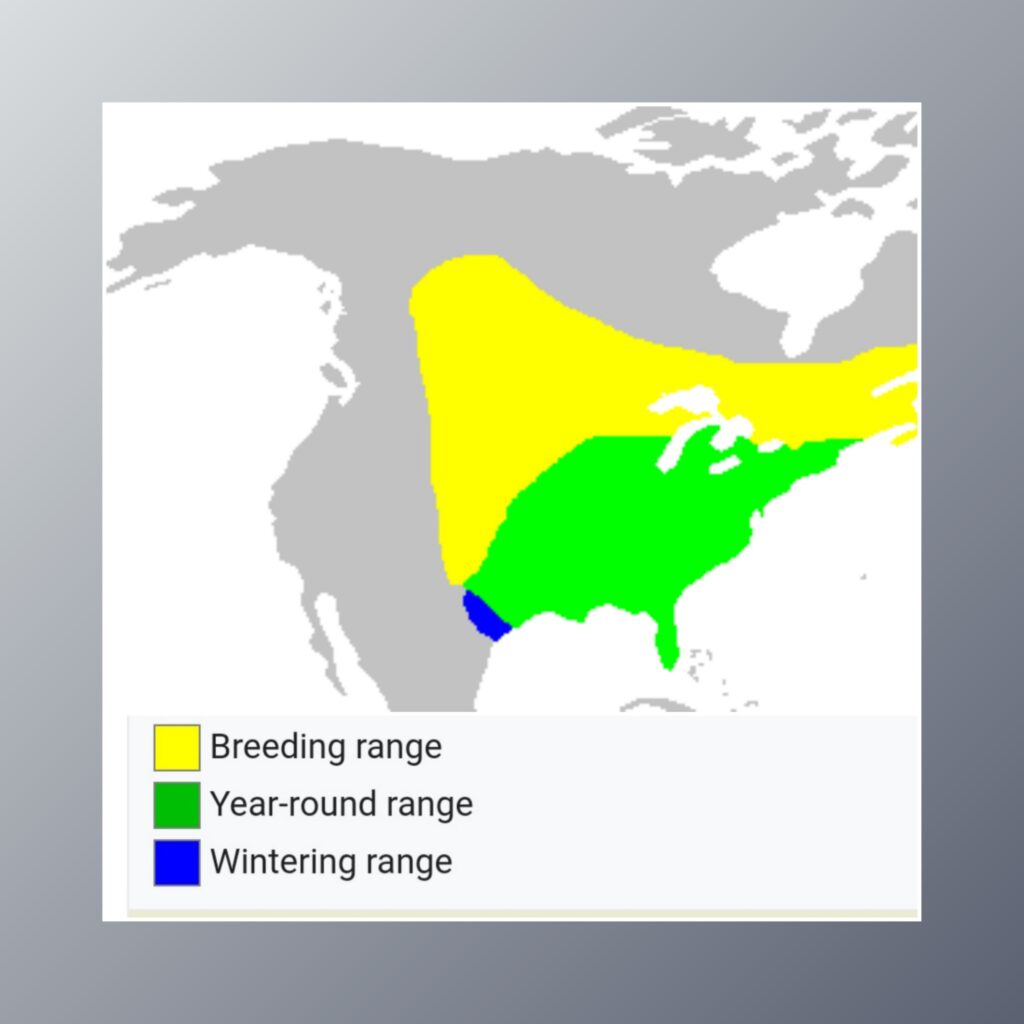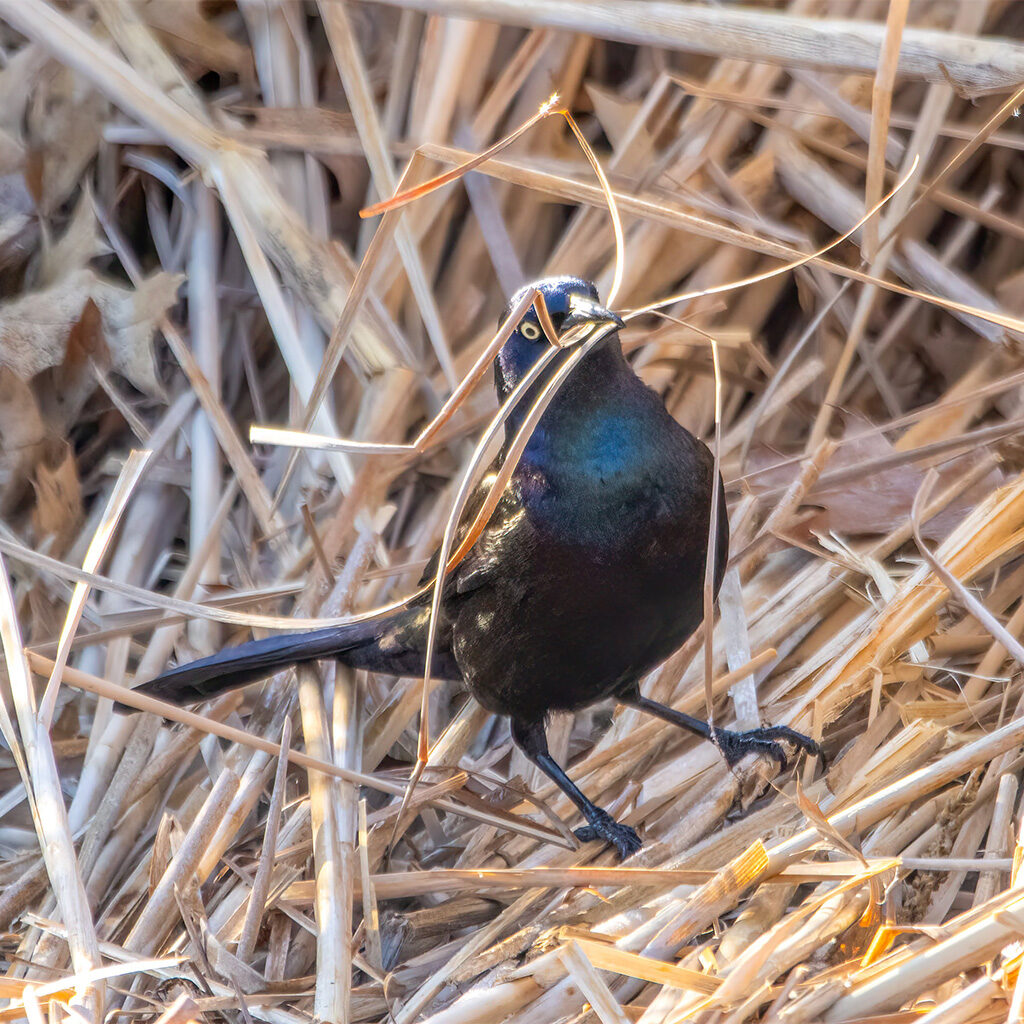A Common Bird of Uncommon Intelligence
The grackle — Quiscalus quiscula — is a common sight across much of North America, its distinctive call and striking appearance making it a familiar feature of both rural and urban landscapes. These highly adaptable birds boast an impressive geographic range — occupying diverse habitats and displaying a wide array of fascinating behaviors and traits. Let’s explore their world a bit.
Where Are They?
Grackles can be found in abundance throughout the eastern and central United States, as well as in parts of Canada and Mexico. Their habitat preferences span a broad spectrum, from open fields and agricultural areas to wooded wetlands, parks, and even city streets.
Grackles thrive in environments that offer a plentiful food source and ample nesting sites, making them a prevalent species in both rural and urban settings.
What Do They Sound Like?
One of the most recognizable features of the grackle is its vocalizations. Their distinctive “chack-chack-chack” call, often described as a harsh, grating sound, can be heard ringing out across their territories. This song serves as a means of communication, helping grackles establish dominance, attract mates, and defend their nesting sites.
What Do They Look Like?
Grackles are medium-sized birds, typically ranging from 11 to 13 inches in length. Their plumage is iridescent, with a shimmering black or brown-black coloration that can appear to shift hues in the sunlight. Sexual dimorphism is evident, with male grackles generally larger and more vibrantly colored than their female counterparts.
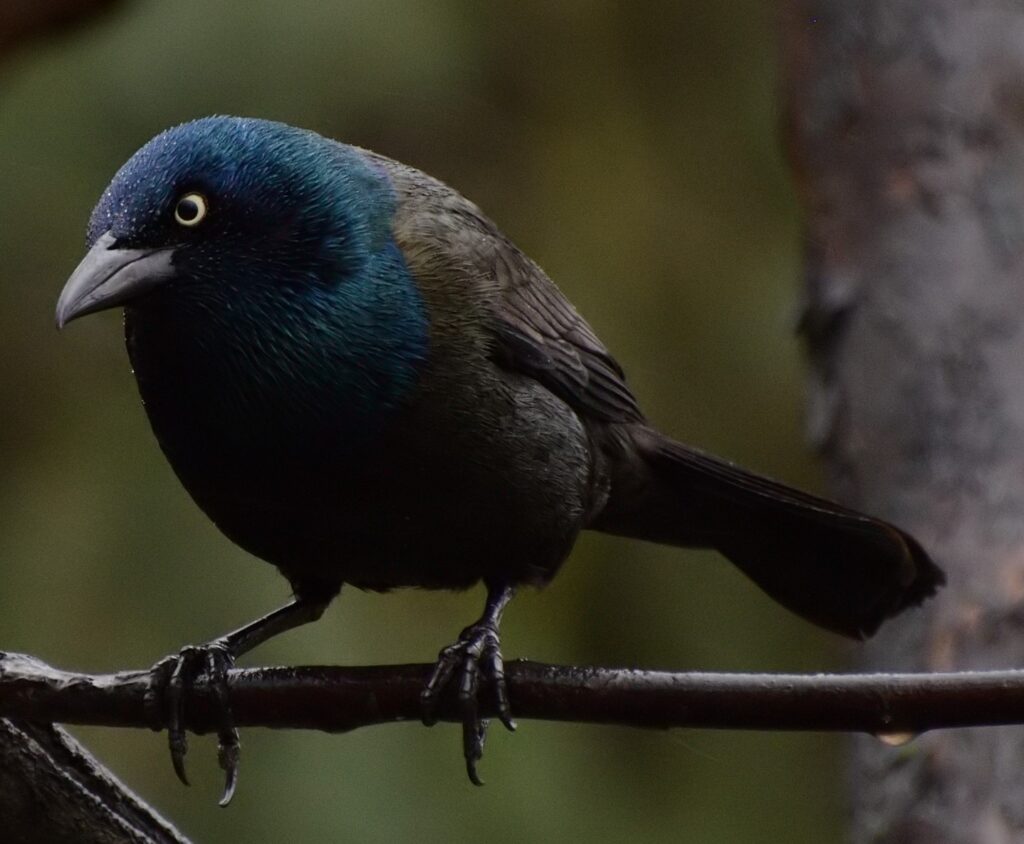
Image By Mark Nenadov – CC BY 2.0,
https://commons.wikimedia.org/w/index.php?curid=58924533
What’s Family Life Like?
The mating, nesting, and breeding habits of grackles are fascinating. These birds often form large, noisy colonies, with multiple pairs nesting in close proximity. Both males and females participate in the nest-building process, constructing cup-shaped nests using a variety of materials, such as grass, twigs and even human-made items like discarded cigarette butts or string.
The female lays three to seven eggs, which she incubates for about 12 to 14 days. After hatching, both parents participate in feeding the chicks, which fledge approximately 20 days after birth.
Do They Migrate?
While some grackle populations are relatively sedentary, others engage in seasonal migrations, often traveling in large flocks to take advantage of changing food sources or more favorable climates. These migratory patterns can vary depending on the specific geographic location and environmental conditions.
What Do They Eat?
Grackles are omnivorous and are notably not picky eaters. Their diverse diet includes insects, small vertebrates, seeds and even human-provided foods such as bread, pet food and garbage. Their adaptability allows them to thrive in a wide range of environments, from rural farmlands to bustling urban centers. They are a common sight at my Washington
DC apartment building’s dumpster, right behind where I live. I’d sure rather have them than rats!
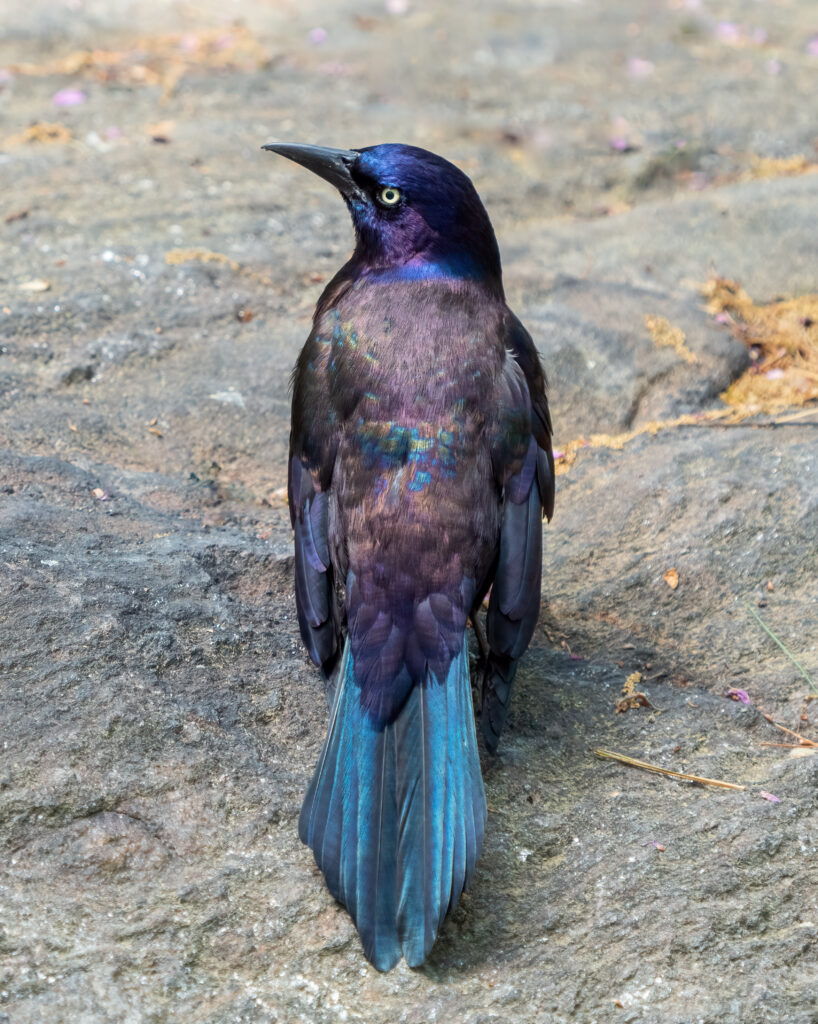
Image By Rhododendrites – Own work, CC BY-SA 4.0,
https://commons.wikimedia.org/w/index.php?curid=104947763
Where Should We Look For Them?
Birdwatchers and nature enthusiasts can often spot grackles in a variety of habitats, including open fields, parks and even urban areas with ample green spaces. These birds are particularly drawn to locations that offer a reliable food source, such as bird feeders, compost piles or areas with a high concentration of insects.
Unusual Behaviors
Beyond their common presence, grackles also exhibit some notable and unusual behaviors. For instance, they are known to engage in cooperative foraging, where individuals within a flock work together to locate and access food sources.
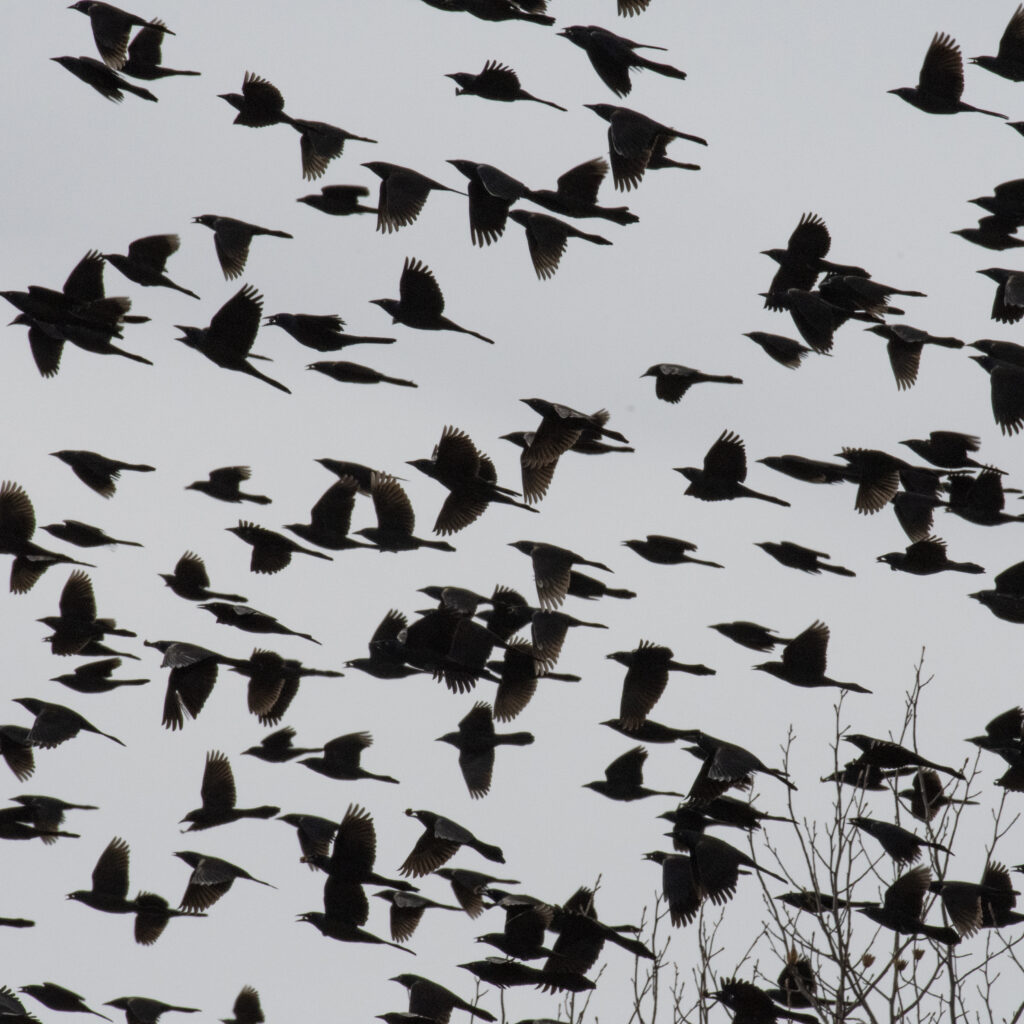
Image By lwolfartist – CC BY 2.0,
https://commons.wikimedia.org/w/index.php?curid=133791671
Most remarkably, these highly intelligent birds have also been frequently observed using tools — such as using pieces of bread or sticks to dislodge food items — showcasing a level of cognitive complexity that is not often associated with common urban birds.
* * * * * * * * * * * * * * *
So there you have it. The grackle is a versatile and ubiquitous bird that has adapted to thrive in a wide range of environments. From its distinctive call to its fascinating behaviors and habits, there’s more to the grackle than meets the eye.
By Steven Roberts

